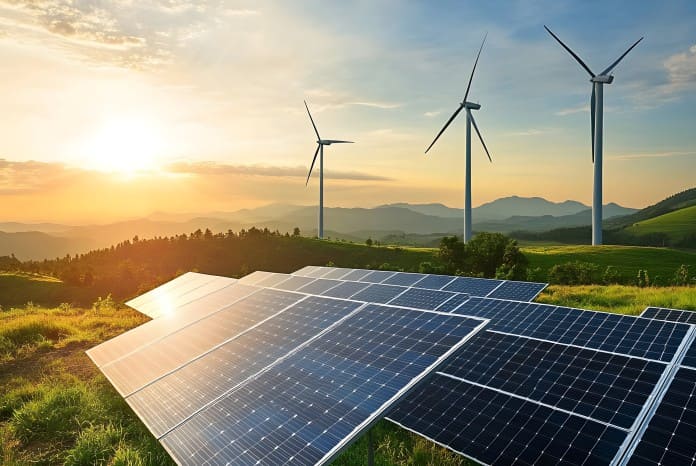
The transition to a renewable energy-powered future is no longer a distant dream; it’s a rapidly unfolding reality. However, integrating intermittent sources like solar and wind into existing power grids presents significant challenges. Artificial intelligence (AI) is stepping in, offering innovative solutions to optimize grid operations and maximize renewable energy’s potential.
The Challenges of Renewable Integration
Intermittency, balancing supply and demand, and grid congestion are among the primary challenges of renewable energy integration. Solar and wind energy fluctuate based on weather conditions, making ensuring a consistent power supply difficult. Additionally, providing power generation matches real-time consumption is crucial, and renewable energy sources can introduce imbalances. As more renewable energy is added to the grid, the risk of congestion increases, potentially leading to power outages.
AI to the Rescue
AI is proving to be a game-changer in addressing these challenges. Here’s how it’s being deployed:
- Predictive Analytics: AI algorithms can analyze vast amounts of data, including weather forecasts, historical energy consumption patterns, and real-time grid conditions. This enables accurate predictions of future energy demand and supply, allowing grid operators to adjust generation and distribution proactively. For example, a study by the National Renewable Energy Laboratory (NREL) found that AI-powered forecasting models can reduce prediction errors by up to 20%.
- Optimal Dispatch: AI can optimize power dispatch from various sources, including renewable energy, traditional power plants, and energy storage systems. By considering cost, efficiency, and grid stability, AI can ensure that the most suitable generation mix is used at any given time. For instance, a recent study by the International Energy Agency (IEA) estimated that AI-based dispatch optimization could lead to annual cost savings of up to $20 billion for electricity grids worldwide.
- Demand-Side Management: AI can help manage demand by analyzing consumer behavior and identifying opportunities for energy conservation. For example, AI-powered smart thermostats can adjust temperatures based on occupancy and energy prices, reducing peak load and improving grid efficiency. A study by the Rocky Mountain Institute found that AI-enabled demand-side management programs can reduce peak demand by up to 15%.
- Virtual Power Plants: AI can create virtual power plants by aggregating distributed energy resources (DERs) like solar panels, batteries, and electric vehicles. AI can control and coordinate These virtual power plants to provide grid services like frequency regulation and voltage support. A report by the International Energy Agency (IEA) suggests that virtual power plants could contribute up to $100 billion in annual economic benefits by 2030.
- Microgrid Integration: AI can facilitate the integration of microgrids, localized power systems that can operate independently or in conjunction with the primary grid. AI can optimize the operation of microgrids, ensuring their reliability and resilience. A Lawrence Berkeley National Laboratory study found that AI-enabled microgrid control systems can improve grid resilience by up to 30%.
Case Studies
Several real-world examples demonstrate the benefits of AI-powered grids:
- California: The California Independent System Operator (CAISO) has implemented AI-based tools to manage the integration of large-scale solar and wind power. These tools have helped maintain grid stability and reduce costs. A study by the CAISO found that AI-powered grid management tools have reduced grid congestion events by 25%.
- Europe: Countries like Germany and Denmark have used AI to optimize the operation of their renewable energy-dominated grids, ensuring reliable and affordable power supply. A report by the European Commission estimated that AI-based grid optimization could lead to annual cost savings of up to €10 billion for European electricity grids.
The Future of AI-Powered Grids
As AI technology advances, we can expect even more innovative applications in the energy sector. For example, AI may be used to develop self-healing grids that can automatically recover from disruptions. Additionally, AI could play a role in integrating emerging technologies like blockchain and energy storage systems.
AI-powered grids are essential for realizing renewable energy’s full potential. By addressing the challenges associated with integrating intermittent sources and optimizing grid operations, AI is paving the way for a sustainable and efficient energy future. As AI technology evolves, we can look forward to even more groundbreaking solutions that will help us achieve a cleaner and greener planet.
About Abe Issa
Abe Issa is a recognized leader in the renewable energy sector and a vocal advocate for innovative energy solutions. He is the founder and chairman of a group of clean energy companies focused on accelerating the shift towards a sustainable future. Issa’s expertise spans solar power, energy storage, and grid modernization. He frequently comments on energy trends and their implications for businesses, investors, and society.




















